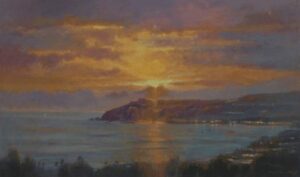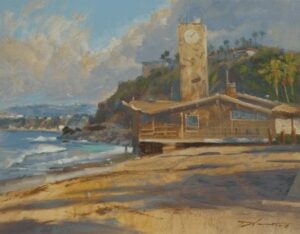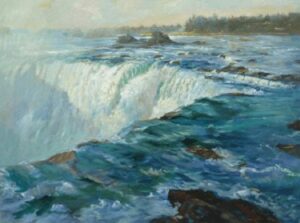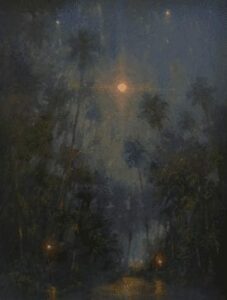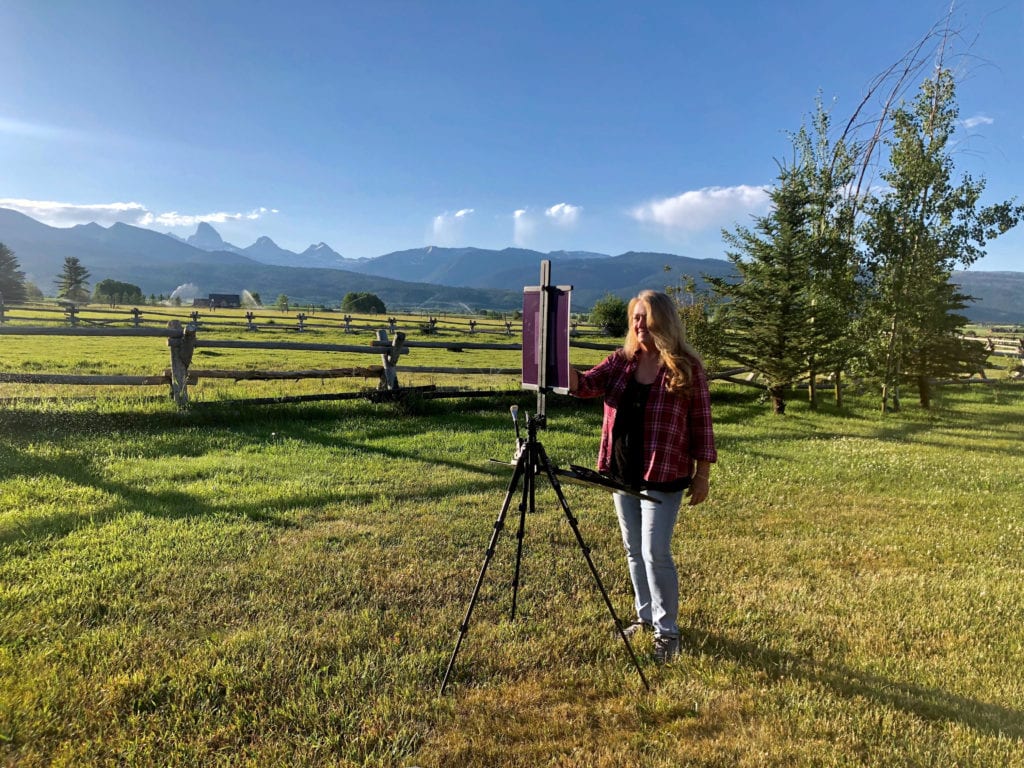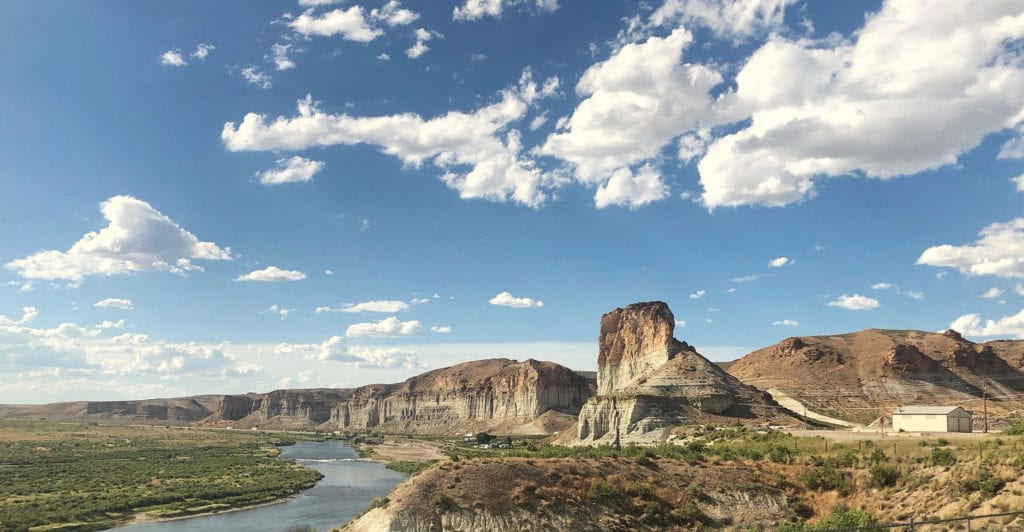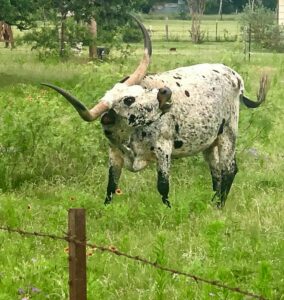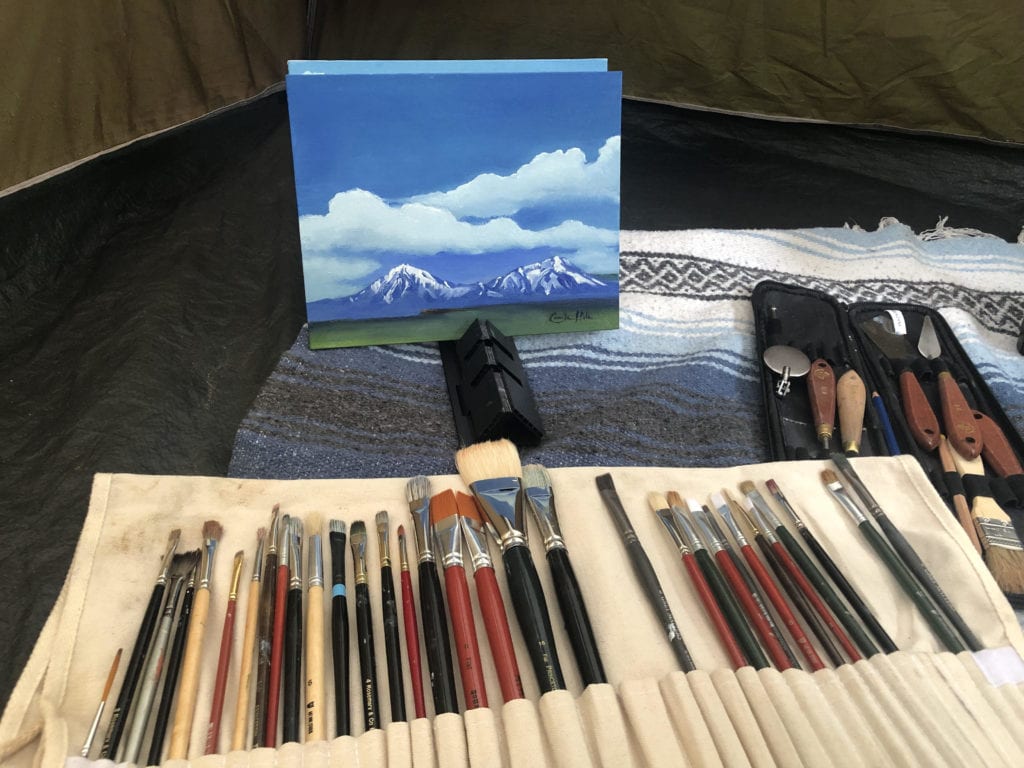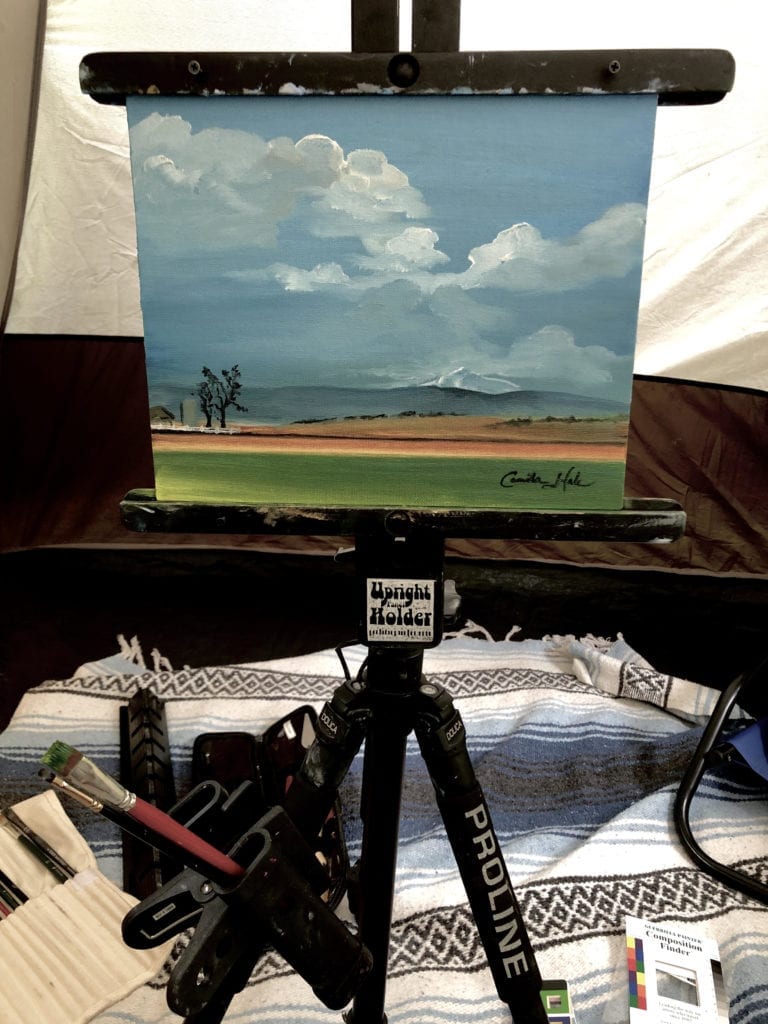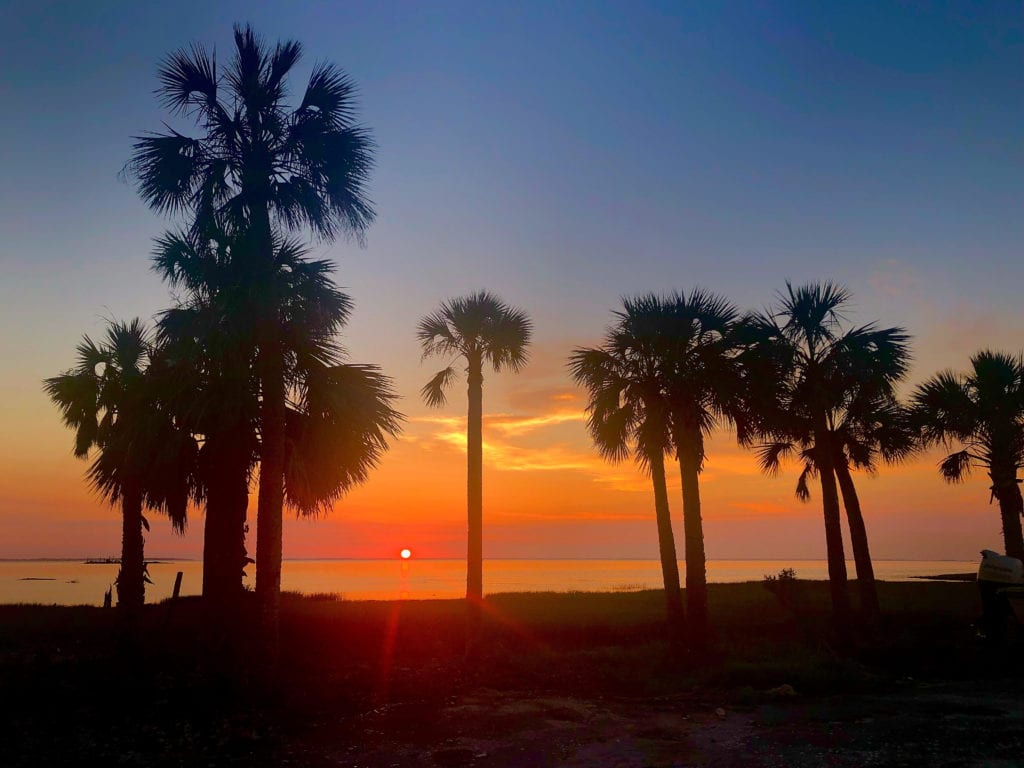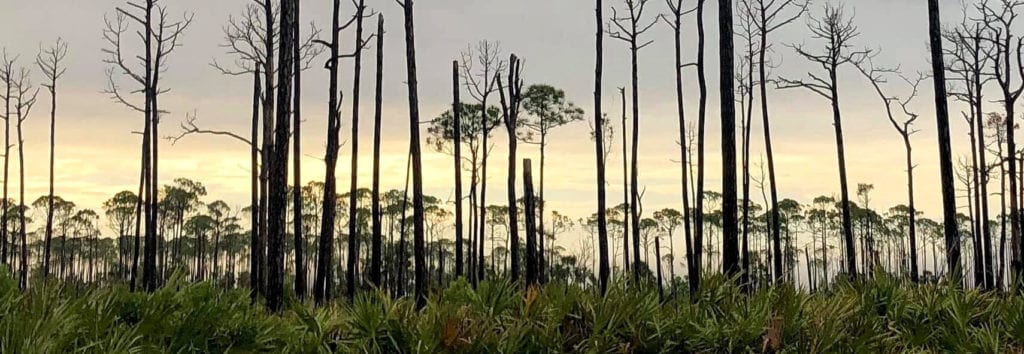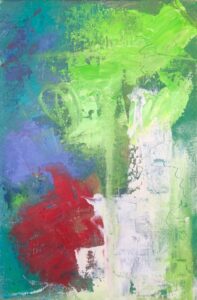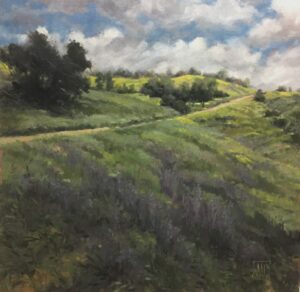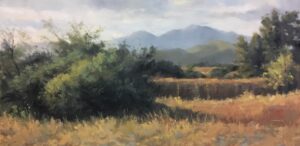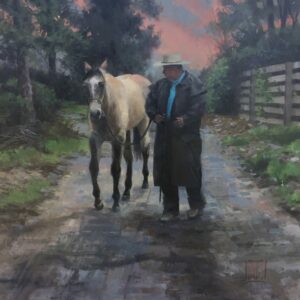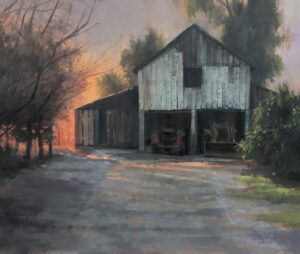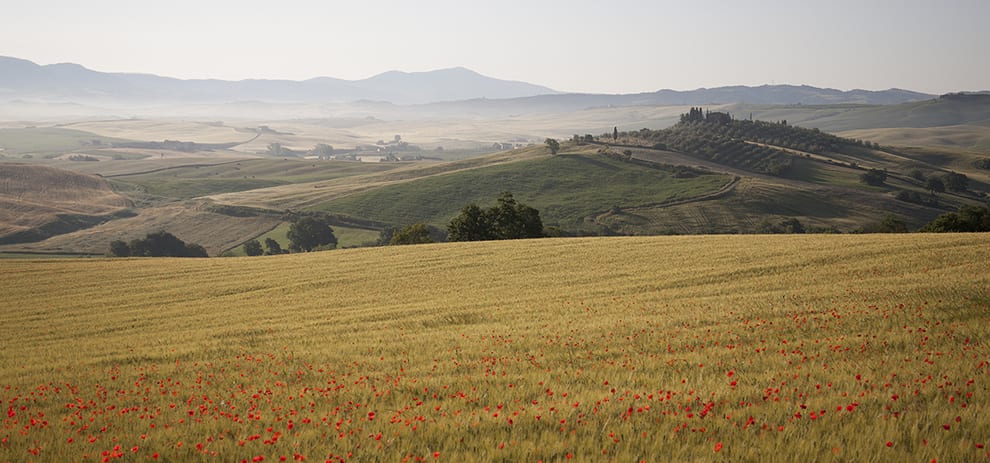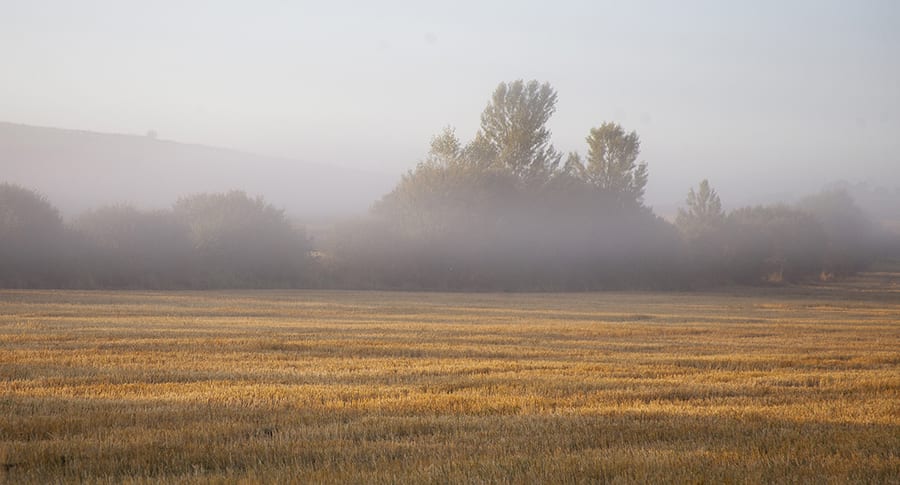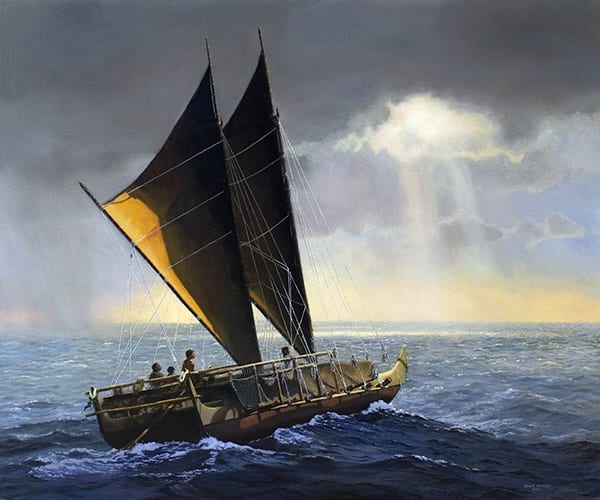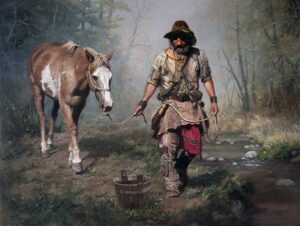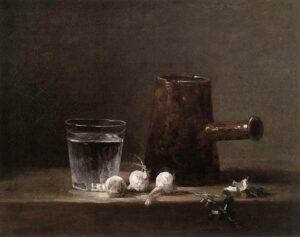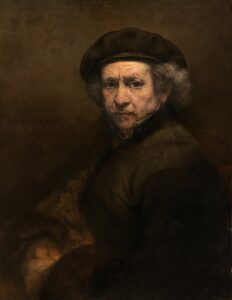
It was one of those days… and late nights. I’d had a packed, busy month, with lots of classes and events, getting home after 11:00 pm far more often than I liked, and had also been painting daily for 20 straight days as part of a 30-day daily painting challenge. Now, while a daily painting practice is certainly good for building discipline, sometimes it’s more of a challenge than others.
Here’s what happened: After a day of wrestling with my websites, I finally got into the studio planning to relax by finishing up a simple little pear painting. Having had a long and arduous day, and a fine shipment from the wine club having just come in, I took with me some (ahem) liquid refreshment. A little music, a sip of wine, a little painting… sounds lovely, no? Uh-huh. As you may have guessed, things did not go as planned.
Somehow, mid-painting, I managed to knock down my glass, sending the contents (which I had just poured, by the way, so right off the bat there’s a waste of some really good wine!) splashily over – onto my palette, my board, all over my table, and the still life setup. Well, fine. We’ll just clean that up, keep going…. umm, nope. While mopping that up, I dropped my paint-saver palette onto the carpet – butter side down. Awesome! Well, let’s just get some brush cleaner on that and…. Nope, again. As I was picking *that* up, I dropped the actual canvas board, also butter side down. Words were spoken.
To add insult to injury, as I was blotting my poor, damp, half-finished painting, I somehow knocked my oversized mixing board off my table, and yes, you guessed it, it also did not land right-side-up… giving me the sterling opportunity to step back into the paint I had previously gotten on the carpet with my palette. *sigh*
So. Let’s review, shall we? My carpet has paint on it, my palette has hairy carpet fibers in it, my mixing board is hopelessly smudged, my painting has red wine on it, I have (cadmium red!) paint-laden footprints staggering backward from the easel, my pears have paint on them, and – quel tragique! – I have no wine in me!
Welp. Some days you should stay in bed.
What a comedy of errors! Was I channeling Buster Keaton? I had to laugh – and I’m chuckling again as I write this. I remember thinking, “I seriously should just stop before I hurt myself!” – wait, what? stop? That’s something I never do! “But but but but but….” my inner painting drill sergeant spluttered, “you’re NOT FINISHED YET!”
Ah. True. But, I had gotten something done (besides making a mess of my studio), and though my inner painting drill sergeant wanted to insist I suck it up and power through, I decided to do something really productive instead.
I took a break. I cleaned up, closed the palette, dipped my brushes, turned off the lights, bade goodnight to the pears and said good evening to a replacement glass of wine. I was prepared for my Inner Painting Drill Sergeant to assault me with feelings of guilt. But you know what? It was fine. I wasn’t trying to finish the painting for an exhibition, a commission, a workshop or a demo. I had no outside commitment to fulfill, beyond the daily painting practice which one could argue I had (so elegantly!) completed for the day. (Nothing about that practice said every day must result in a finished painting.)
So perhaps the question to ask here was “Isn’t it important, along with knowing when to push yourself, to know when to stop?” I confess that is something I struggle with. I have been called “one-speed Casey” for my tendency to jump in with both feet and swim (or hike, or pedal) like hell until the goal is achieved. On a good day, I might call that perseverance. On a not-so-good day, it could read as impulsiveness – or impatience. Or stubbornness. That insistence on completion (and speed!) and wish for mastery (and excellence, right now, dang it!) can result in good work habits, lots of study, sustained effort, and tangible results. However, when overplayed, it can also result in… shall we say, overly spontaneous?… pieces… and even exhaustion. Which, in my case, apparently leads to a marked lack of coordination.
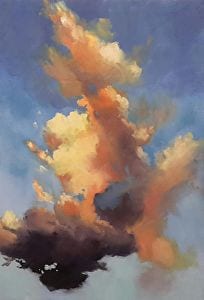
by Casey Cheuvront
An overly full mind and overly tired body are not the best way to accomplish your best work. It can result in rushed, sloppy compositions, inaccurate value structure, poor color mixes, bad brushwork (shudder.) While there is always pressure to do more, to succeed, to be better, it’s also true that in our hyper-connected, screen-driven, urban, electronic world, we can lose track of how best to do that. Sometimes the best way to power through is to not power through. The Tao says, “The Way is ever without acting, yet nothing is left undone.” To put it in a more mundane way, our minds and bodies – and spirits – all need rest from time to time. Our job is to not only push to be our best selves, but to recognize that need, and to give ourselves permission, at least sometimes, to take that time. Everyone needs a day – or a night – off now and then.
Even one-speed Casey.
